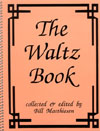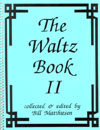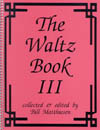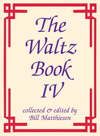GIVE ME YOUR HAND (Tabhair domh do lámh). AKA – "Da Mihi Manum," "Oh Give Me Your Hand." Irish, Air (6/8 time) {"boldly"} or Waltz (i.e. Bulmer & Sharpley). G Major/Mixolydian (Brody, Matthiesen, Neal, Oswald): G Mixolydian (Mallinson, O'Neill, O'Sullivan/Bunting, Tubridy). Standard tuning (fiddle). One part (Brody, Mallinson, Ó Canainn, O'Neill): AB (Tubridy): ABC (Matthiesen): AABB (Oswald). The index of the Irish collector Edward Bunting's 1840 collection gives that the piece was composed in 1603 by Ruainn Dall O'Catháin (d. 1653), or familiarly Rory Dall O'Cahan, originally an Ulster harper and a close relative of Donal O'Cahan, chief of his clan, whose stronghold was in Coleraine [according to Grattan-Flood]. The O'Catháin/O'Cahans were a powerfull clan in parts of Antrim and Derry, which lands were called the O'Cahan country, and were loyal pledges to Hugh O'Neill, whose harper Rory Dall was said to be (O'Neill, Irish Music and Musicians, 1913). He performed and composed primarily in Scotland (the Gaelic appelation dall means 'blind'). Rory Dall is said to also have been an accomplished performer on the bagpipes and was much respected by the Highland gentry. There is some indication that O'Catháin changed his name to Morrison while in Scotland. A legendary account, related by Francis O'Neill (1913), gives some idea of the lasting loyalty of feudal obligation. It seems that his composition "Give Me Your Hand" (or, in Latin, Mihi Manum) became renowned in Rory Dall's lifetime, and that both tune and the story of its composition (related below) reached the ear of King James the Sixth, who bade the harper appear at the Scottish court. He performed the tune and so delighted the king that James familiarly laid his royal hand on the musician's shoulder. When he was asked by a courtier if he realized the honor the king had shown him by the action, Rory is said to have replied: "A greater than King James has laid his hand on my shoulder." Who was that man? cried the King. "O'Neill, Sire," proudly said the harper, standing up. Rory's branch of the family came into conflict with the powerful O'Donnell clan of
An account of the occasion of Rory Dall's composing this tune is included in harper Arthur O'Neill's Memoirs (MS 46, p. 27), and goes:
(Rory Dall) took a fancy to visit Scotland where there were great harpers. He took his retinue (or suit) with him. Amongst other visits in the style of an Irish chieftain he paid one to a Lady Eglinton, and she not knowing his rank in a peremptory manner demanded a tune which he declined, as he only came to play to amuse her, and in an irritable manner left the house. However, when she was informed of his consequence she eagerly contrived a reconciliation and make an apology, and the result was that he composed a tune for her ladyship, the handsome tune of "Da Mihi Manum" (Give Me Your Hand) on which his fame spread thro' Scotland.
The melody's popularity was long-lived, as attested by its appearance in many collections throughout the 18th century, including Daniel Wright's Aria di Camera (1727), Neal's Celebrated Irish Tunes (c. 1742—a revised date from the oft-given 1721 or 1726, this based on watermark research--see the appendix to the 2001 edition of O'Sullivan's Carolan: Life, Times and Music of an Irish Harper), Burke Thumoth's Twelve English and Irish Airs (c. 1745–50), Thompson's Hibernian Muse (c. 1786), Brysson's Curious Selection of Favourite Tunes (c. 1790, and Mulholland's Ancient Irish Airs (1810). The Latin title first appears in the Wemyss manuscript of 1644 and in the Balcarres manuscript of 1692, although the English or Gaelic translations were not given until Bunting's 1840 edition (Sanger & Kinnaird, 1992). In modern times this ancient harp air has entered modern Irish playing tradition, and is a favorite in County Donegal, for one. There are two main versions of the tune: one can be found in the collections of the Neals, Thumoth, James Oswald and Edward Bunting, while the other is to be found in the manuscripts and publications of Dow, Balcarres, Wemyss and MacFarlane.





